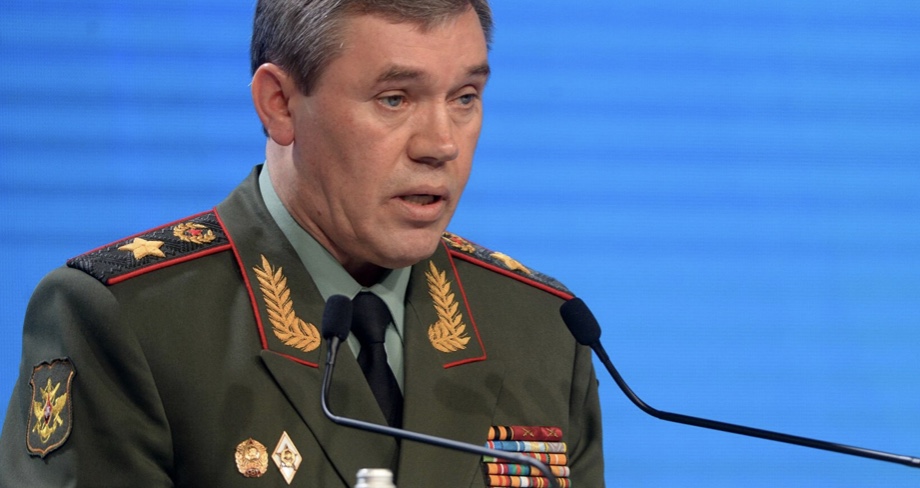(by Andrea Pinto) The invasion of Georgia in 2008, the annexation of Crimea in 2014, the "peace" interventions in Nagorno-Karabakh in 2021 and in Kazakhstan in January of this year, the intervention in Syria in 2015 in support of Bashar Assad, in Libya in 2017 to protect Khalifa Haftar and the Wagner mercenaries scattered from Cyrenaica to Mali to Central Africa, so for about ten years Putin has wanted to re-establish the territorial extension and power of the former USSR.
A senior NATO official said recently that Putin "uses the military tool quickly and effectively in order to be present wherever possible to reassign Russia a global strategic role as it was in the days of the USSR ". The new doctrine provides the Kremlin with a very short chain of command based on the political and personal agreement of Putin with the Foreign Minister Sergei Lavrov and the chief of the armed forces, general Valery Gerasimov.
The Gerasimov Doctrine
In February 2013, the general Valery Gerasimov published a 2.000-word article, "The Value of Science Is in the Foresight", where he explained the tactics developed by the Soviets, mixed them with strategic military thinking about total warfare, and presented a new theory of modern warfare, namely hack into an enemy's company rather than attacking it from the front. She wrote: "The same 'rules of war' have changed. The role of non-military means to achieve political and strategic goals has grown and, in many cases, has outweighed the power of force of arms in their effectiveness. All this is complemented by military means of an occult nature ”.
The article is considered by many to be la new Russian military doctrine, a vision of total war that places politics and war within the same spectrum of activity. The approach is guerilla warfare and moves on all fronts with a range of actors and tools, such as hackers, media, business people, leaks and, yes, fake news, as well as conventional and asymmetrical military means. Thanks to the Internet and social media, the kind of operations that Soviet psychic operations teams once could only fantasize about - overturning the internal affairs of nations with information alone - are now plausible. There Doctrine Gerasimov states that non-military tactics are not auxiliary to the use of force, but the preferred way to win. The chaos is the strategy pursued by the Kremlin: Gerasimov specifies that the goal is to create an environment of permanent unrest and conflict within an enemy state.
In the Ukrainian crisis the Gerasimov Doctrine is finding its maximum expression
During the 2014 protests, the Kremlin supported extremists from both sides of the struggle - pro-Russian forces and Ukrainian ultra-nationalists - fueling the conflict that the Kremlin used as a pretext to seize Crimea and launch war in eastern Ukraine. Add a hefty dose of information warfare and this confusing environment - where no one is sure of anyone's motives - the Kremlin can easily exercise control. This is the Gerasimov Doctrine on the ground.
Today, almost 140 soldiers with artillery and tanks are deployed on the borders of Kiev with the clear intention of openly challenging the Western world and questioning security in Eastern Europe. It is no coincidence that the various NATO member countries are seeking solitary talks with Putin, they do not move together, each tries to keep intact their interests with Russia, ranging from energy to billionaire trade.
Putin would therefore be implementing the "Divide et impera”To weaken the Atlantic Alliance and above all the ever-present enemy, the United States.
Returning to Ukraine, writes Molinari in Corsera, Moscow's way of handling the crisis in Ukraine demonstrates that the military showdown towards the Dnieper River is accompanied by a barrage of diplomatic moves aimed at triggering separate dialogues with the major countries Born or rather the United States, Great Britain, France and Germany. If Gerasimov is the determined director of the naval and land siege of Kiev, Lavrov is the refined architect of a parallel negotiating offensive whose aim does not seem so much to reach an agreement as to bring turmoil to the opposing front. And it is an approach that is paying off because on the one hand Moscow deals with Washington - complete with written documents on future armaments, exercises and assets - while on the other hand it wanders London in a very colorful way, courts Paris to stimulate its ambitions and benefits from clear differences of opinion in the new German government. Effectively insinuating in Europeans the doubt that Ukraine is in fact at the center of a challenge over gas supplies to the Continent, with Washington wanting to obstruct those of Moscow.
The duel between Putin and NATO, Molinari specifies, is therefore a hybrid challenge, where armaments and diplomacy are pieces of a single mosaic, together with the use of hackers and social networks on both fronts. It is a strategy that General Valery Gerasimov illustrated very clearly in 2019, explaining how Russia needed a new doctrine to “Evolving from friction and destruction to global conflict and soft power"In order to be able to respond to the challenge of the United States. Hence the need to accompany the more traditional military activity with actions of "active defense"But"indirect”Because it aimed at weakening the adversary by all sorts of other means, from electronic operations to more classical diplomacy.
The US is also using hybrid means to counter the Russians, using the very detailed intelligence information with which the Pentagon has been anticipating the Kremlin's moves on Ukraine for at least two months.
